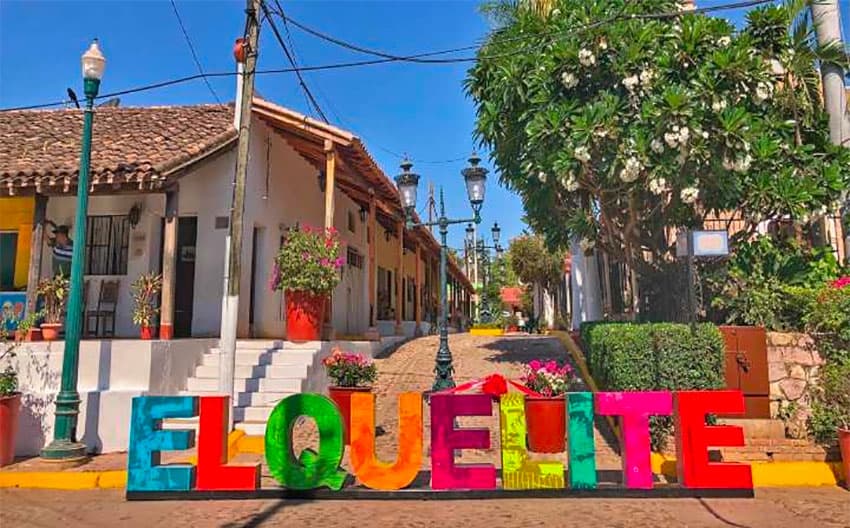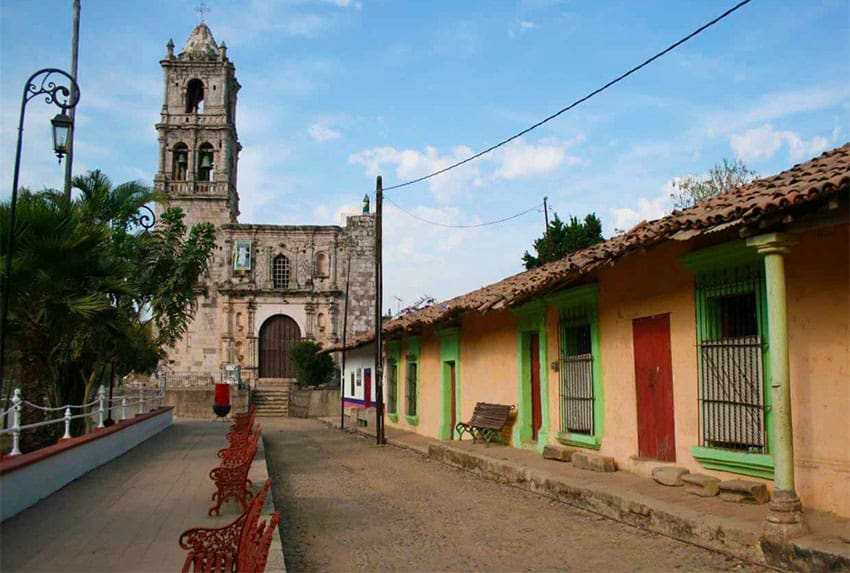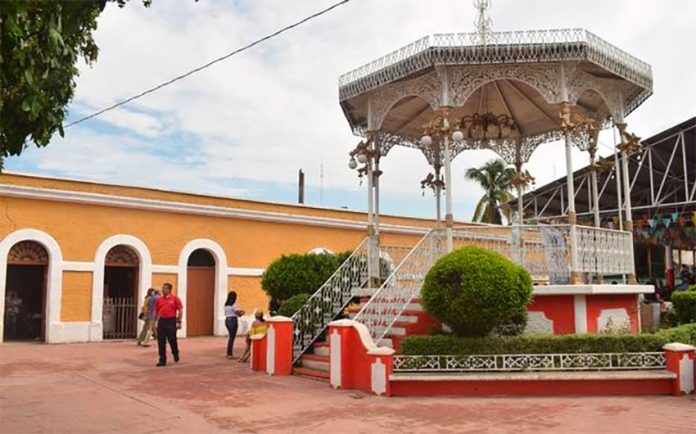For some of the smaller towns in Sinaloa, the coronavirus had a perk: touring the plazas and restaurants of remote hamlets proved an attractive getaway for city dwellers feeling trapped by the pandemic.
But although those towns are making it through the economic challenges, getting to this point was not easy. Just a few years ago, Sinaloa experienced a spike in violence that left small towns reeling.
La Noria is one such town. Located an hour’s drive inland from the port city of Mazatlán, La Noria is now a thriving local tourism destination. Children play as riders trot by on horseback. The houses are brightly painted and the streets are clean. The first impression gives no hint that a few years ago, this was almost a ghost town.
“Ten years ago, the town looked empty. People were moving to the city because there was no more work. Many businesses closed,” said Marisol Lizárraga, president of the nonprofit Ciudadanos de la Noria (Citizens of Noria). “We realized we needed to create confidence among the people who visited us here.”
That confidence would take time to cultivate. There had been various shootings reported in local papers, and unconfirmed reports of a massacre that killed 40 people. It was not considered a safe area.

Sinaloa investigative journalist Sibely Cañedo said the violence was not new. Cartel activity in rural areas had always been accompanied by some violence, but in 2008 a conflict within the Sinaloa Cartel sparked a new, higher level of violence. The Beltrán Leyva Organization split off from the Sinaloa Cartel and the two groups battled for control of the countryside.
“Starting in 2008, the patterns of violence changed. They were spreading terror in the communities and many towns emptied. Many people had to flee from those towns, sometimes due to threats or being directly affected by the violence,” Cañedo said. “People were forced to choose sides … if they did not want problems or be in danger, it was better to leave. So many people lost everything they had.”
Over time, the situation stabilized as the leaders of the Beltrán Leyva gang were captured or killed. The last leader of the cartel, Héctor Beltrán Leyva, was arrested in 2014. At the same time, the perception of public safety among Sinaloa residents was improving. And between 2010 and 2019 crime fell 32% even as it increased in Mexico as a whole, according to the National Institute of Statistics and Geography.
Cañedo said that although violence is down, that could change at any time.
“There are periods in which things calm down, but then another conflict erupts,” she said.
In La Noria, Lizárraga and others took advantage of a period of calm to create their nonprofit, whose goal is to develop the tourist economy by capitalizing on cultural assets. They decided to organize a Sunday market where local artisans could sell crafts and food.
There were two challenges to the success of the market, Lizárraga said. First, skepticism of residents as to whether La Noria could attract tourism and second, the area’s bad reputation. They needed “the people of Mazatlán to have confidence in visiting with family, that nothing would happen, that [La Noria] is a calm place,” Lizárraga said.
The market was a success. The tourists came and spent money. Before the pandemic, the town received 400 to 800 visitors on an average Sunday, Lizárraga said. Now, they still receive 300 to 500 visitors on average.
Though international tourism is down, there is still plenty of local tourism, according to leather worker and La Noria town administrator Mario Salas.
“The pandemic has brought us fruit: look at how the people come!” Salas said. “We have had lots of work during this situation with the coronavirus. People wanted to come to small towns to rest, to enjoy fresh air.”
With luck, the stability will last. According to Cañedo, tourism can bring more than economic benefits to small towns. More tourism means less isolation and increased presence of government authorities.
“If we look at the history of violent events, it is not common that they occur in very populated areas and tourist areas. So that is also a strategy of some citizens. They want to increase tourism in their towns because that brings more security,” said Cañedo.

The town of El Quelite is perhaps proof of that strategy. Located less than an hour outside Mazatlán, El Quelite enjoys robust year-round local tourism. Visitors flock to its artisan street market and restaurants. It began to establish itself as a tourist destination in the late 1990s, before the cartel violence intensified. It now has the designation of “Majestic Town” (Pueblo Señorial), a step on the way to being a Magical Town, or Pueblo Mágico.
In the 90s, El Quelite was a different place. The roads were unpaved and there were no health services. But as the tourist money began to flow in, the town was able to attract more government interest. The roads were paved, the schools began to receive more resources and the town got a health clinic.
Town administrator David Osuna said that even in the worst years of violence, El Quelite had relatively little conflict.
“It’s logical to think that [criminals] look for something away from development. For example, we are a developed town because we have communications, we have a highway, we have internet. We have certain services that don’t exist up in the mountains. There, it is more isolated,” said Osuna.
With the pandemic, El Quelite has seen a decrease in international tourism, but the economy “hasn’t suffered too much,” said Osuna.
Dr. Marcos Osuna is the owner of El Mesón de los Laureanos, a popular El Quelite restaurant. Along with all other nonessential businesses in Sinaloa, it was closed from the end of March to July 2020. But after that period there was a boom, he said, as visitors sick of being cooped up came from around Sinaloa to visit El Quelite.
However, not every town has benefited from the pandemic boom of local tourism. Before the pandemic, visitors to Copala — many of them international — admired the centuries-old church and sampled the banana pie at Restaurante Alejandro. But since the pandemic began, times have been hard.
“The pandemic completely stopped us,” said Alejandro Rodríguez, owner of Restaurante Alejandro. “Between 2010 and 2013 there was a wave of violence. It affected us to some degree but not entirely because we kept receiving people from cruise ships [in Mazatlán] the whole time. It didn’t affect us as much as the coronavirus. It was even more devastating than the violence.”
But now, the cruises have stopped and so has the international tourism they brought.
Mazatlán tour guide Eduardo Sánchez frequently took groups of international tourists to Copala. He said it began to be a popular destination in the 1990s, due to its deep history and culture. But now, he said, many longstanding businesses have closed and he does not know if they will come back.
“What will happen with the places that have closed? With people who have been in one place for more than 100 years? Nobody can replace them. The stories they tell, how they make their products, people who know how to attend to tourists … I don’t know what the impact will be with these changes,” Sánchez said.
For now, the town is making do. Some residents have found employment with a nearby mining operation. Others continue to work in tourism. On one recent Sunday, there were nearly 100 weekend visitors, Rodríguez said.
“The plaza looked beautiful, full of cars and families enjoying a moment of peace here in the town.” Rodríguez said.
With the coronavirus on the decline and the violence in check, perhaps more visitors will follow.
Mexico News Daily
